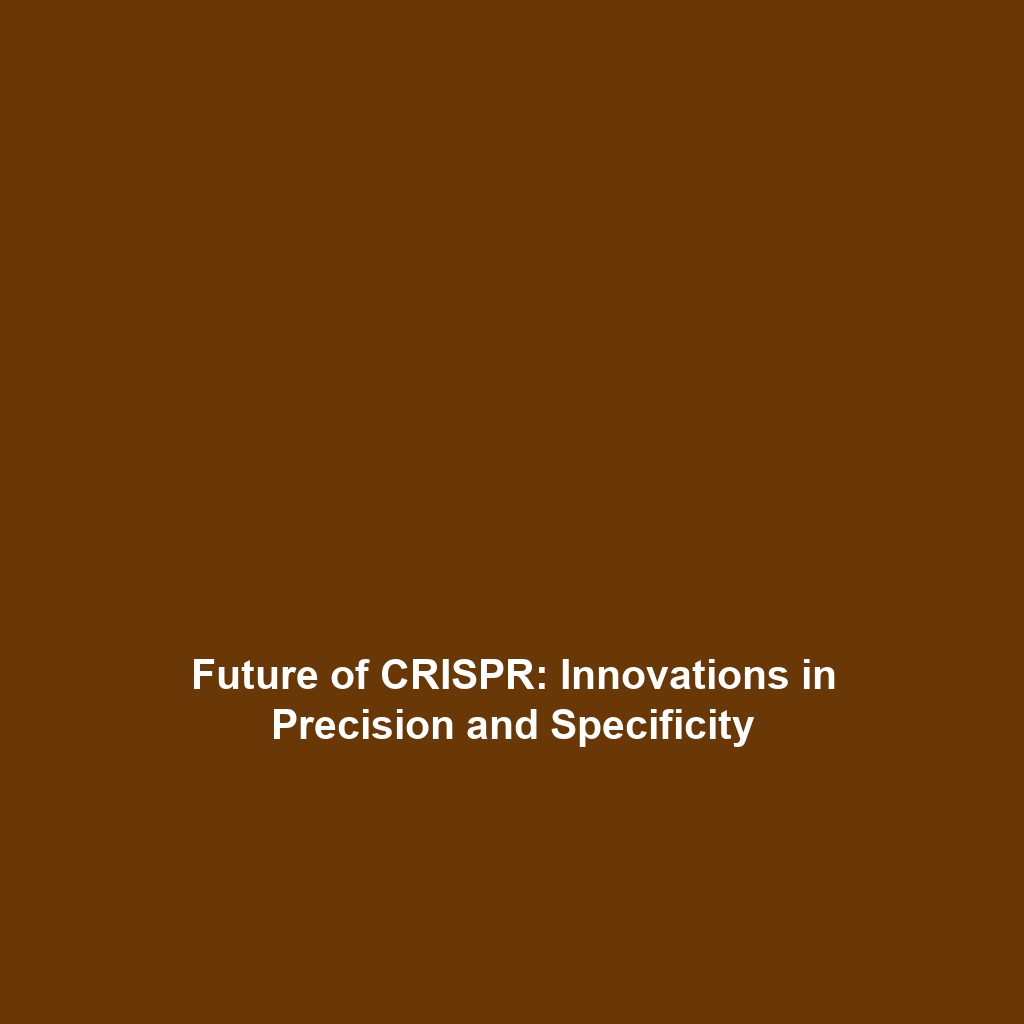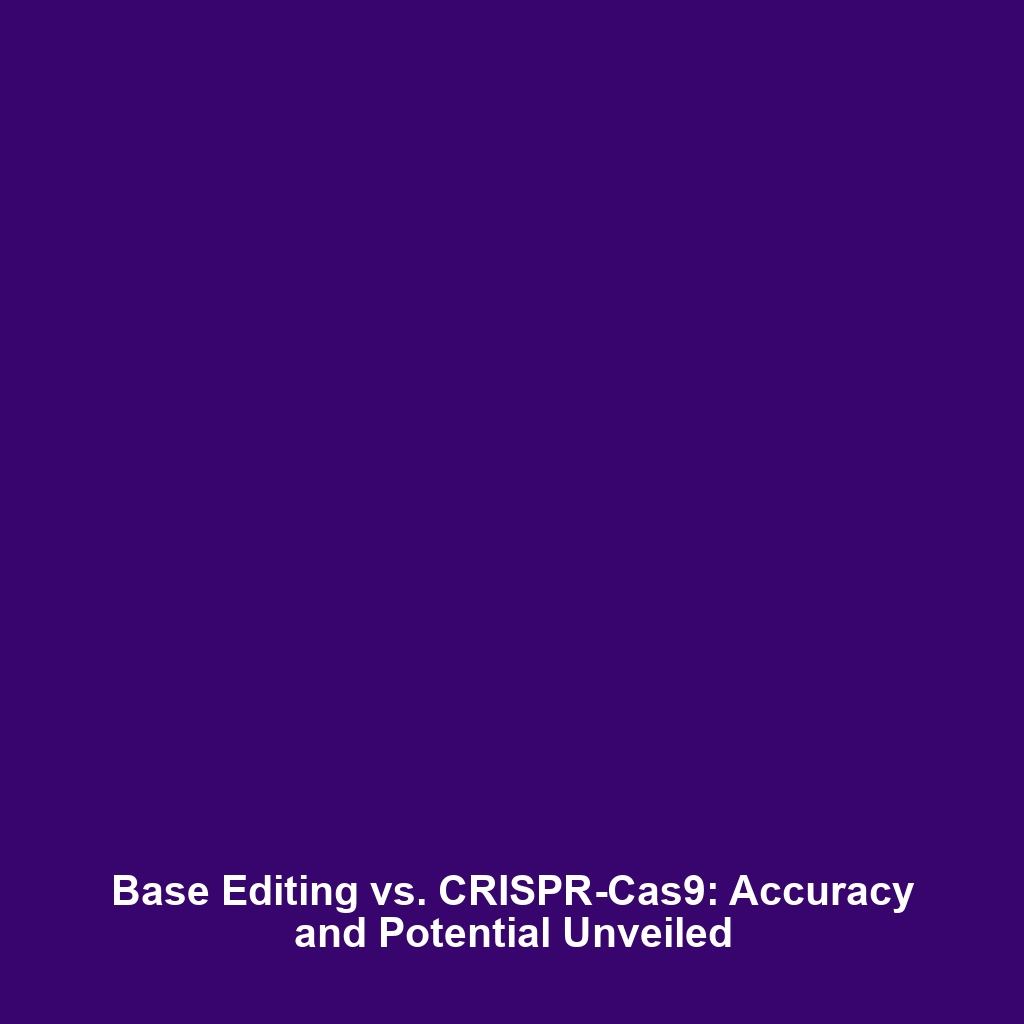Innovations in Precision and Specificity for Future Gene-Editing Tools
Introduction
Innovations in precision and specificity for future gene-editing tools are pivotal to advancing CRISPR Gene Editing technologies. These enhancements are essential for developing more targeted and effective therapies that can accurately modify genetic sequences without unintended effects. As researchers continue to refine these tools, their significance expands, paving the way for groundbreaking applications in medicine, agriculture, and biotechnology.
Key Concepts
Understanding the key concepts behind innovations in precision and specificity involves several fundamental principles:
- Targeted Editing: Advanced systems enhance the ability to pinpoint specific DNA sequences, reducing off-target effects.
- Improved Delivery Mechanisms: Innovative methods are being developed to enhance the delivery of CRISPR components into cells, increasing efficiency.
- Next-Gen CRISPR Technologies: Variants such as CRISPR-Cas9, Cas12, and Cas13 demonstrate different capabilities and applications within gene editing.
These innovations directly inform how CRISPR Gene Editing is evolving, ensuring a future of safer and more effective genetic interventions.
Applications and Real-World Uses
The real-world applications of innovations in precision and specificity for future gene-editing tools are extensive and transformative:
- Medical Therapies: Gene therapies using CRISPR have shown promise in addressing genetic disorders, such as sickle cell disease and muscular dystrophy.
- Agricultural Advancements: Genetically modifying crops to resist pests or adapt to climate change demonstrates the potential of CRISPR technologies.
- Biotechnology: Improvements in industrial microorganisms for biofuel production and waste management highlight practical implications.
These applications exemplify how innovations in precision and specificity enhance CRISPR Gene Editing’s potential to address global challenges.
Current Challenges
Despite the promising advancements, there are several challenges and limitations related to the innovations in precision and specificity for future gene-editing tools:
- Ethical Concerns: The manipulation of genetic material raises ethical questions surrounding designer organisms and potential ecological impacts.
- Regulatory Framework: The lack of established regulations for novel gene editing technologies can hinder their implementation in clinical and agricultural settings.
- Technical Limitations: There is still a risk of off-target effects, which may lead to unintended genetic alterations.
Addressing these challenges will be crucial for the responsible development and application of CRISPR Gene Editing technologies.
Future Research and Innovations
Looking ahead, innovations around precision and specificity in gene editing tools are set to redefine the CRISPR landscape. Key areas of ongoing research include:
- Enhanced Accuracy: Research aims to further minimize off-target effects through refined CRISPR designs and alternative CRISPR systems.
- Integration of AI: Artificial intelligence presents opportunities to predict and improve the outcomes of gene editing efforts.
- Alternative Editing Technologies: Development of prime editing and base editing represents a revolutionary shift towards safer genome alterations.
These advancements signify an exciting future for CRISPR Gene Editing and its transformative potential across various fields.
Conclusion
In summary, innovations in precision and specificity for future gene-editing tools are at the forefront of CRISPR Gene Editing advancements. As technology evolves and overcomes existing challenges, it will lead to more tailored applications in medicine, agriculture, and beyond. To stay updated on the latest breakthroughs and developments, explore our guides on medical applications and agricultural innovations.



